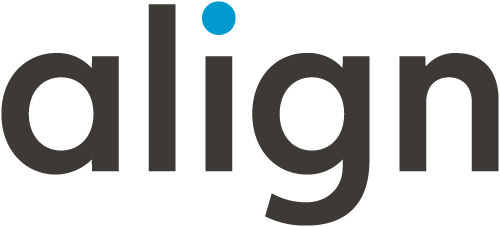Align Technology (ALGN)
Back in the late 1990′s, the concept of invisible braces being used as an alternative to typical metal wired braces was a hot topic within the specialized branch of dentistry that deals with correcting crooked teeth and improper bites known as orthodontics. By 1997, Zia Chishti, an adult orthodontics patient and Stanford Graduate School of Business graduate who noticed that his plastic retainer held the promise to address this demand, devised an ingenious methodology for implementing invisible braces by using a combination of 3D computer imaging and a series of customized firm, clear plastic retainers designed to incrementally adjust the teeth until the desired dentition (arrangement of the teeth) was obtained. Partnering with some fellow Stanford grads, Chishti formed Align Technology (ALGN) and set about further developing and commercializing the Invisalign® system to treat a variety of malocclusions, or misalignments of the teeth and dental arches, achieving FDA approval in 1998 and launching the product into markets the following year.
Since then, the company has seen continuously accelerating growth, as brand awareness of their core product spread far and wide across the planet, owing to Invisalign's comprehensive efficacy for orthodontic treatment, as well as the product's comfort, ease of use, and the clear aesthetic advantages over unsightly metal braces. The Invisalign system encompasses proprietary virtual modeling software, as well as the related mass customization and rapid manufacturing processes for the virtually clear and easily removable dental aligners, which can include unique features like Power Ridge® and SmartForce® attachments to enhance specific results. The Invisalign system is actually an entire family of products which range from the full treatment option, to highly cost-effective options for minor crowding or spacing. The Invisalign system's family of products represents an ideal solution for a wide variety of simple, or even complex situations, and is currently prescribed through a network of Invisalign-trained orthodontists and general practitioners (GP) in over 80 countries around the world.
The company has obviously evolved considerably since its inception and today Align Technology offers a wide range of digital treatment solutions tailored to dental industry professionals, including the entry-level, five-stage clear aligner system, Realine®, which is geared towards the GP dentistry market and designed for minor cosmetic fixes, as well as crowding or spacing issues. Realine is distributed exclusively through a partnership (June 2013) with superbly networked health care products and services provider, Henry Schein (NASDAQ:HSIC) and provides non-Invisalign GP dentists with a competitively-priced solution for doing basic corrective work. Product distribution of Realine benefits mightily from HSIC's enormous reach and the extensive network of long-term and tightly-knit relationships HSIC has developed with some 80k plus dental practitioners worldwide, representing a large, mostly untapped market.
Align Technology enjoys increasingly profitable exposure to a key niche of the roughly $5.4 billion global dental equipment market, which is projected to surge to over $7.1 billion within the next four years, growing at a 5.4% CAGR (Transparency Market Research), via their iTero® Intraoral scanning system. The significant advantages of the iTero scanning system over existing competitors are numerous and include such things as high-res, perfectly focused imaging capabilities which are achievable even if the scanning wand is right up against the patient's teeth. Unlike competitors, whose scanning technology typically requires the scanning wand to hover five to fifteen millimeters above the teeth in order to stay in focus and produce a good image, making the scanning process a real chore that requires a considerable amount of patience and skill. Scanning with iTero is done quickly and results in highly accurate 3D models (iTero prosthetics enjoy a near-zero rejection rate), meaning that fewer/shorter patient visits are necessary, and that the common occurrence with other approaches of having to redo scans via follow-up appointments is almost completely eliminated. Because the use of messy, uncomfortable and often inaccurate polyvinyl siloxane (or PVS, a silicone elastomer), impression molding is also eliminated, the overall process is much more appealing to patients and dentists/orthodontists are finding they see increased business by being able to offer patients a solution incorporating the iTero scanning system.
Tight iTero integration with Invisalign, as well as the company's OrthoCAD® digital services, represents another significant advantage for dental professionals. The storage of all associated scanning data in an easily exported file that can be handed off to any laboratory with an open CAD/CAM (computer-aided design and manufacturing) system for completion makes iTero an easy solution to integrate into any existing workflow. Moreover, iTero features like iCast and iRecord, which provide a digital alternative to typical stone-cast models, as well as the architecture's simplified data storage/retrieval paradigms, vastly improve the overall workflow for already busy practitioners. Since late 2013, the iTero Intraoral Scanner has been fully compatible with the leading chairside design and milling system as well, which is produced by private company E4D and which is exclusively distributed by HSIC. This powerful combination allows clinicians with the iTero scanner to significantly expand services to their patients, offering them fast turnaround options like same-day restorations such as crowns, bridges and veneers. The iTero scanner is a smaller, but important chunk of the overall ALGN story and it represents an important vector for the company to gain increasing access to the $6.5 million plus global dental implant and prosthetics market, where CAD/CAM continues to be a rising star.
CAD/CAM has really revolutionized several aspects of dentistry and has shaved immense amounts of time off procedures like designing dental crowns and bridges, simultaneously leading to vastly improved diagnosis and procedure planning. Align Technology is at the forefront of the CAD/CAM and clear aligner space, with innovative solutions that place the company on an equal or greater footing than other sector operators like Sirona Dental Systems (NASDAQ:SIRO) or Dentsply International (NASDAQ:XRAY). Consolidative forces within the broader industry, like those which led to the acquisition of Swiss dental implant maker, Nobel Biocare, by Danaher Corp. (NYSE:DHR) in late 2014 for some $2.2 billion, make the company's top-shelf offerings stand out even more. Align has even teamed up with SIRO as of March 2015 to make Sirona's CEREC Omnicam a valid option for executing Invisalign case submissions, enabling Invisalign providers with a CEREC Omnicam and the related software to simply submit a digital impression instead of the typical PVS impression. ALGN and SIRO also agreed to fully support the sizeable iTero laboratory consumer base with an all-digital workflow. Using Sirona's inLab software, as of version 15.0, technicians are able to natively import iTero scan data. Comparing the scanning technology, software, services and broad array of aligner offerings from ALGN to relatively less compelling product portfolios from aligner developers like Danaher offshoot, Ormco, with their Simpli5™ express aligner system that is designed only for minor corrections and relapses, makes Align Technology really shine as a one of the sector's only full-spectrum providers. Especially when you throw in Align's clearly established practice of going to great lengths in order to cement its platform technologies as the premier choice within the industry by initiating symbiotic partnerships.
The recently upgraded ClinCheck Pro software tool for Invisalign treatment is another big selling point when it comes to the company's sophisticated digital imaging capabilities, as the software provides extremely precise 3D controls that now make it possible for the first time ever to individually position each tooth right on the 3D model itself and perform design visualization in real-time, leading to better outcomes. Similarly, the company's Invisalign Outcome Simulator application, which is powered by the iTero scanner, allows doctors to do chairside consultation and visualization directly with the patient, enabling patients to inspect their current dentition right alongside the projected and corrected version, increasing their confidence and ultimately patient retention. The iTero system has quickly become the key leaping off point for many procedures within the industry today and because it is the only scanner on the market with certified milling system and milled model service connectivity, the platform's multipurpose 3D digital model file and extensive software options have secured its role as the go-to choice for restorations, orthodontics, implant solutions, and 3D case planning procedures in many offices.
Align Technology is constantly developing new iterations of their product line as well and the company's recent announcement of the launch of their Gen 5 Invisalign developments, engineered specifically for deep bite malocclusion, alongside the rollout of their upgraded ClinCheck Pro software package, shows how the company is constantly eating up new and greater market share. The announcement in March of this year at the highly influential International Dental Show in Cologne, Germany, that the latest edition of their market leading iTero Element Intraoral scanning system has been made available, was met with considerable excitement by the attendees, who no doubt salivated over the significantly improved imaging technology, with 20 times faster scanning speed, improved color scans, and backwards compatibility with older iTero workflows. The backwards compatibility is a prime example of Align's commitment to satisfying their customer base, which has collectively done over 1.2 million implant scans, over 1.3 million orthodontic scans, and over 600,000 Invisalign scans to date. The newest version of the scanner unit is also much smaller overall, with a more compact form factor and footprint, as well as being considerably lighter. The new unit also features a 40% smaller and lighter scanning wand with built-in controls and an instant defogging system, as well as a 19″ high-def multi-touch display, and integrated gyro capabilities for easily rotating the on-screen models.
Invisalign has risen to prominence in a very short time and is considered by many practitioners in the industry as the Gold Standard of clear aligners. The Invisalign system is generally seen by many in the industry as having so much development time and resources built into the overall platform that it is impossible for others to really compete. Cheaper, less comprehensive alternatives within the global dental consumables market, like ClearCorrect™, only make up a small portion of the total clear aligner niche dominated by Invisalign. The $15 billion plus global dental consumables market was recently projected by Transparency Market Research as being on-track to hit somewhere around $23.8 billion by 2018, growing on a CAGR of approximately 7.1% and Align Technology looks positioned extremely well to capitalize on this growth. Rising aesthetic standards across the globe are a particularly bullish undercurrent here and the 2015 iData Research report on the roughly $600 million APAC dental implant fixture and final abutment market makes a great argument for the future of ALGN. Projected 10% annual growth of this market in coming years, driven by mounting dental health awareness and income levels throughout China, as well as the proliferation of CAD/CAM technology, means the market could triple in size by as early as 2020.
A recent study by the American Dental Association showed that people consistently found a person's smile to be the most important physical feature, outstripping the body, eyes, and hair. It seems reasonable that the rapidly rising popularity of cosmetic and preventative dentistry in particular will continue to drive the orthodontics equipment and consumables markets in coming years and Baird Equity Research's RW Baird dental stock index, which beat the S&P 500 in 2013 by 5%, looks to be setting up for another solid year in 2015, as the sector benefits from stable returns in NA, as well as growing revenues from APAC and EMEA (Europe, the Middle East and Africa) markets.
Align Technology recently (March 3) celebrated a major milestone with their 3 millionth Invisalign customer, shortly after having reported superb Q4 and full-year 2014 financials earlier in January, which saw an 11.4% jump in revenues year-over-year to $198.6 million, and over 126k Invisalign cases served. It is worth noting that it took the company 12 years to hit the 1 million customer mark with Invisalign, but only 3 additional years to acquire their next million, and they closed the gap on the third million in just under two years. Invisalign accounted for the lion's share of 2014 revenues for ALGN, at around 94% of total, with the iTero scanner and services components making up the remainder. Continued strong growth for ALGN in the APAC and EMEA markets, as well as solid baseline results in NA, reinforced by a 16.1% year-over-year increase in global sales among teenagers (who represent roughly one quarter of their overall market), clearly underscores the growing global brand awareness for their core product line.
A considerable portion of the company's increasing brand presence is likely attributable to their sleek and highly functional web footprint, as well as their enhanced marketing efforts of late focused on the lucrative teen demographic. With some 5.8 million consumers hitting Align's various sites last year, 650,000 consumers completing their Smile Assessment form and 443,000 plus consumers actively searching for an Invisalign trained practitioner, the company really knows how to ignite a firestorm of interest. The company enjoys a continually expanding social media footprint as well, with 66% growth last year to over 115,000 followers. International web stats were also robust, with over 2 million visitors from the EMEA region and over 760,000 visitors in APAC, driven in large part by successful regional programs and consumer demand targeted campaigning. The company even opened a series of three dedicated flagship clinics in South East Asia, synced up with a PR blitz to inform and entice consumers.


